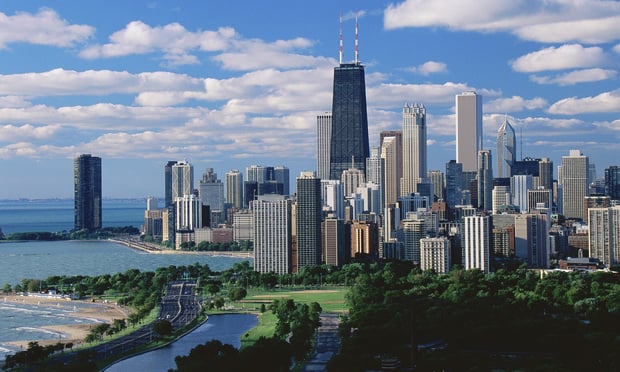CHICAGO—The US is growing older, and as the population ages Midwest experts believe that in 2016 and beyond there will be an increasing number of empty nesters that choose to downsize within the same state rather than move to warmer locales. However, many of the the towns where they are settled and want to remain are built-up, and where to put the new homes needed for this group will present a challenge.
''We have catered to this market quite a bit for decades," Jerry S. James, president of Edward R. James Cos., tells GlobeSt.com. He has learned that even though their children may be grown, people in this age group stiil have an attachment to local stores, churches and friends. "They don't like to give all that up, but they are more than happy to give up the responsibilities and trappings of owning a large single-family home."
James Cos. typically finds infill locations for its communities such as Westgate at The Glen in suburban Glenview and Brighton Mews in nearby Park Ridge, where boomers who raised their families in these suburbs can occupy smaller, less expensive homes. Many feature first floor master bedrooms that allow residents to avoid traveling up and down staircases, an important consideration for this older group. And property management provides landscaping and other services so residents can travel "without worrying about what is happening with their houses."
Peter Brennan, president of Foxford Communities, reports local empty nesters make up the majority of sales at Clocktower Pointe, its condo development in Countryside. "At this stage in their lives, baby boomers want to make things as simple as possible," he says. "For most, that means enjoying a maintenance-free lifestyle with plenty of space and upscale finishes for hosting family – it doesn't mean having to upkeep a second home far away."
"These locations are tough to find," adds James, and the limited supply of suitable land frequently drives the prices up. "It can be a very expensive proposition from a development standpoint."
Still, creative builders will find a way. "There are sites that have been used for shopping centers or light industrial purposes," for example, that no longer produce enough income and can be had for a good price. Furthermore, the demand for golf courses "has flatlined, but the fixed costs of operating one is not going down," and many owners have decided to sell and sell relatively cheap.
Therefore, developers should continue to have opportunities to "turn lemons into lemonade."
© Touchpoint Markets, All Rights Reserved. Request academic re-use from www.copyright.com. All other uses, submit a request to [email protected]. For more inforrmation visit Asset & Logo Licensing.







